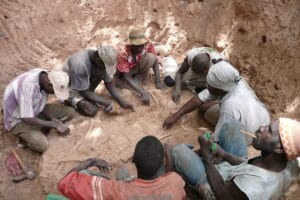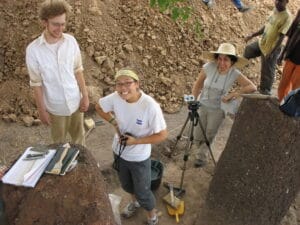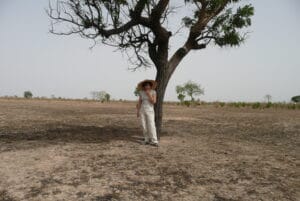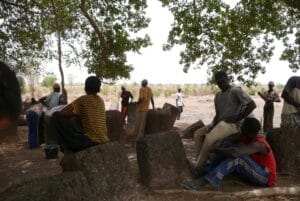





2007
May – Research Retreat at Ngayene, Senegal.
The Sine Ngayene Archaeological Project aims to investigate the structure
and dynamics of the cultural landscape along the Petit-Bao Bolong
Drainage in South Central Senegal. The site contains Megalithic stones of
various sizes spread on large cemeteries dating from the late second
millennium BC to the mid-second millennium AD. The archaeological
research conducted by Prof. Holl, an archaeologist born in Cameroon, and
current curator of the University of Michigan’s archaeological museum is
presenting new theories on how the ancient Senegalese perform rituals
and buried their dead. The evidence Prof. Holl collected from the
monuments (skeletal and metal data) indicates not a primary, but a
secondary burial culture. His research aims at casting further light on a
culture where prestigious families re-buried their dead in a manner that
resembles the practice of erecting halls of fame. Together with his
colleague from the Sorbonne, Dr Hamady Bocoun, director of Senegal’s
Cultural Heritage and National Patrimony, they are working to preserve
and investigate further the Sine Ngayene site.
Professor Holl invited me to join his excavation. I witnessed and took
photographs of the digging and the careful removal of ancient ceramics.
Skeletons emerged from the dry earth which were carefully cleaned while
pages of data were written down. I gathered much visual information
which was expanded during lively debates with the professor and his
students during the long dark nights – there was no electricity at the site.
The megaliths, the extraordinary dryness of the land, the heat, the
villagers’ way of life and the 8-hour jeep-journey across Senegal provided
me with a portfolio of images that are key references from which I am
working at present along with the material obtained in Catalhöyük.
